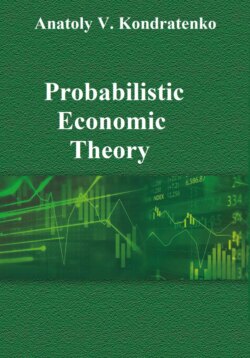Читать книгу Probabilistic Economic Theory - Anatoly Kondratenko - Страница 23
PART B. Classical Economy
CHAPTER III. Classical Economies in the Price Space
3. Conclusions
ОглавлениеIn this Chapter we developed classical economies and derived the corresponding equations of motion, namely the economic Lagrange equations in the price space. Intuitively, we suppose that the applied least action principle can be treated to some extent as the market-based trade maximization principle. The relationship between these two principles becomes more clear within the framework of quantum economy (see the following Chapters). The extension of the method for the price-quantity space is straightforward therefore we will not do it here (respective formulas, figures and discussions can be found in Chapter I). Conceptually, we can regard Lagrangian as the mathematical classical representation of the market invisible hand concept. Note that, according to the institutional and environmental principle, Lagrangian include not only inter-agent interactions but also the influences of the state and other external factors on the market agents. Therefore, figuratively, we can say that the market invisible hand puts into practice simultaneously plans and decisions of both the market agents and the state, other institutions etc. As is seen from the above shown example, physical classical models or simply classical economies deserve thorough investigation, as they happen to become an efficient tool of theoretical economics. However, there are reasons to believe that quantum models where the uncertainty and probability principle is used for description of companies’ and people’s behavior in the market are more adequate physical models of real economic systems. Recall that probability concept was first introduced into economic theory by one of the founders of quantum mechanics, J. von Neumann, in the 40s of the XX-th century [4].
